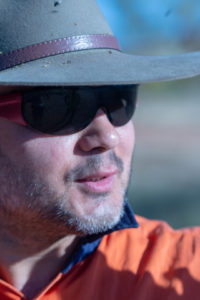Field Training for Exploration & Mine Geologists
Overview
This course is aimed at exploration and mine geologists and covers the basics of geological mapping with some advanced components available for more experienced geologists.
The course will include:
- recognising and mapping structures, rocks and alteration in the field;
- integrating field data and geophysical datasets to map areas of prospective mineralisation.
The mapping will be done in the world-class metallogenic province of Mount Isa and consists of mapping the geology, structure, and alteration around an undeveloped Cu-Au deposit.
Although the course is divided into 2 modules they are not standalone sessions. Attendance at both modules is required.
Delivery Online & Field (Mount Isa region)
Structure 2 x modules: online module followed by field module
Course Leader Dr Ioan Sanislav, EGRU JCU
Dates
Module 1
3 x online sessions over consecutive days
Each session 3 to 4 hours
Tuesday 12 – Thursday 14 May 2026
Module 2
5 x full days in the field
Monday 18 – Friday 22 May 2026
Field work based out of Mount Isa
Participants to arrive in Mount Isa by Sunday 17 May.
Professional Development 50 hours
Participation in this course may contribute to the Continued Professional Development (CPD) requirements of professional institutes.

Registration Fees
Fees for both modules
AUD inclusive of GST
EGRU Member AUD 3700
Non Member AUD 5140
AIG Member AUD 4330
Maximum number of participants: 12
If this course is over-subscribed you will be automatically waitlisted.
Registration Fees include:
- Transport: Monday to Friday of the field module.
- Accommodation and Meals: Sunday to Friday of the field module.
- Mapping supplies eg. stationary
Registration Fees do not include:
- Airfares
- Travel Insurance
- Transport from Mt Isa Airport to the Leichardt accommodation
Confirmation Date Friday 24 April 2026
Registration for this course will open in 2026.
Please send course enquiries to EGRU_training@jcu.edu.au.
Module 1
Tuesday 12 – Thursday 14 May 2026
Online
- Day 1: Introduction to geological mapping – principles and techniques
- Day 2: Aerial photographs/satellite imagery mapping and interpretation
- Day 3: Geophysical mapping and interpretation
Prerequisites: access to QGIS, basic QGIS skills
Module 2
Monday 18 – Friday 22 May 2026
Field Mapping
Five days of field mapping in the Mount Isa region. This will involve mapping a complexly deformed, metamorphosed, and altered area that contains developed and undeveloped Cu-Au±REE and U-REE mineralisation.
At the end of this course you should be able to produce a geological map showing lithology, structure, and alteration which you can use to identify exploration targets and plan drilling.
Prerequisite: completion of Module 1
Participants must supply:
- Full field gear – including suitable walking shoes (steel caps not required), long pants, long sleeve shirt, hat and water bottle
- Laptop computer
- Further information on requirements will be provided
Course Leaders
Ioan Sanislav

Ioan is the Director of EGRU and an Associate Professor in Economic & Structural Geology at JCU. His main research interests are:
– economic geology;
– structure and tectonics with a focus on exploration for mineral
deposits and structural controls on mineralised systems;
– field geology and geological mapping.
Ioan maintains active engagements with the exploration and mining industry through EGRU, with collaborative research projects and with students working on a range of industry sponsored projects.
Youseph Ibrahim

Youseph is a Lecturer at James Cook University. His main research interests are:
– structural geology and tectonics;
– field geology and geological mapping;
– numerical modelling of crustal deformation;
– using digital tools to enhance geological workflows.
Youseph’s research integrates field-based observations with numerical modelling to investigate the dynamics of lithospheric deformation with applications to mineral resource formation. He has field experience in diverse geological settings across Australia and North America. He is also involved in the development of StraboSpot, an open-source platform designed to improve geological data collection, storage, and sharing in both field and laboratory environments.




